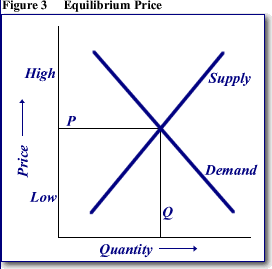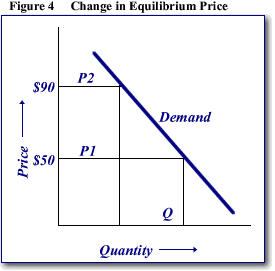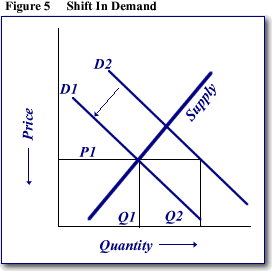How do supply and demand determine commodity prices.
Standard 5 Individuals, businesses and governments interact and exchange goods, services and resources in different ways and for different reasons; interactions between buyers and sellers in a market determines the price and quantity exchanged of a good, service, or resource.
Benchmark - 9.2.4.5.5 - Use demand and supply curves to explain how the equilibrium price and quantity in a market is determined as buyers and sellers adjust their offers in response to shortages or surpluses.
How Supply and Demand Determine Commodities Market Prices
Learning Center
|
Price is derived by the interaction of supply and demand. The resultant market price is dependant upon both of these fundamental components of a market. An exchange of goods or services will occur whenever buyers and sellers can agree on a price. When an exchange occurs, the agreed upon price is called the "equilibrium price", or a "market clearing price" . This can be graphically illustrated as follows: ( Figure 3)
A market price is not a fair price to all participants in the marketplace. It does not guarantee total satisfaction on the part of both buyer and seller or all buyers and all sellers. This will depend on their individual competitive positions within the market. Buyers will attempt to maximize their individual well being within certain competitive constraints. Too low a price will result in excess profits for the buyer attracting competition. Likewise sellers are also considered to be profit maximizers. Too high a price will likewise attract additional producer competition within the market. Therefore, there will exist different price levels where individual buyers and sellers are satisfied and the sum total will create a market or equilibrium price.
Likewise a shift in demand due to changing consumer preferences will also influence the market price. In recent years there has been a shift in demand on the part of overseas Canadian wheat buyers toward the Canada Prairie Spring varieties, away from the Hard Red Spring varieties. A decline in the preference for Hard Red Spring wheat shifts the demand curve inward, to the left, as illustrated in figure 5. With no reduction in supply, the effect on price results from a movement along the supply curve to a lower equilibrium price where supply and demand is once again in balance. In order for prices to increase producers will have to reduce the quantity of hard red spring wheat brought to the market place or find new sources of demand to replace the consumers who withdrew from the marketplace due to changing preferences or a shift in demand.
|


